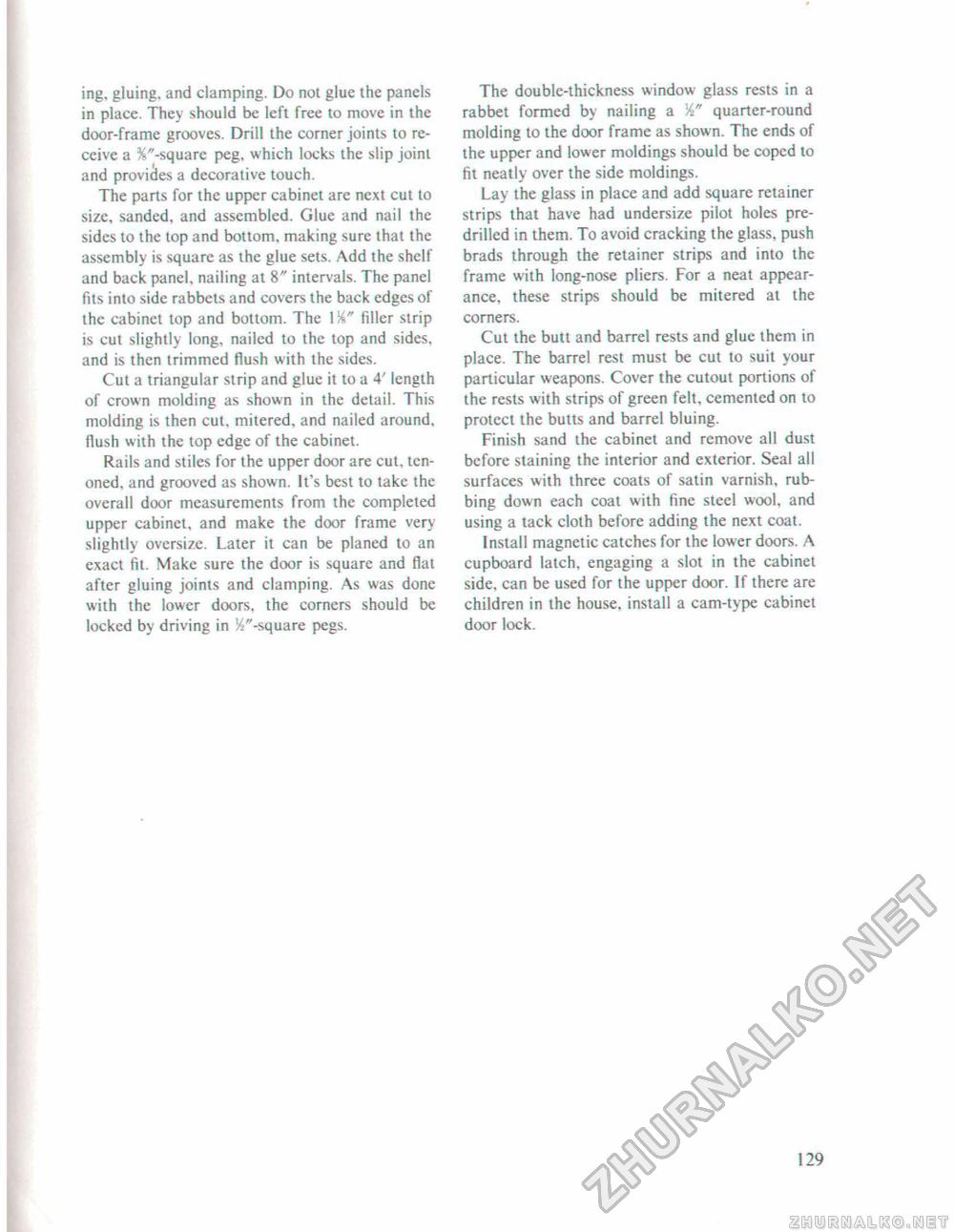Woodworker's Journal 101-Projects-for-Woodworkers, страница 136
ing. gluing, and clamping. Do not glue the panels in place. They should be left free to move in the door-frame grooves. Drill the corner joints to receive a ^'-square peg, which locks the slip joint and provides a decorative touch. The parts for the upper cabinet are next cut to size, sanded, and assembled. Glue and nail the sides to the top and bottom, making sure that the assembly is square as the glue sets. Add the shelf and back panel, nailing at 8" intervals. The panel fits into side rabbets and covers the back edges of the cabinet top and bottom. The filler strip is cut slightly long, nailed to the top and sides, and is then trimmed flush with the sides. Cut a triangular strip and glue it to a 4' length of crown molding as shown in the detail. This molding is then cut, mitered. and nailed around, flush with the top edge of the cabinet. Rails and stiles for the upper door are cut. tenoned, and grooved as shown. It's best to take the overall door measurements from the completed upper cabinet, and make the door frame very slightly oversize. Later it can be planed to an exact fit. Make sure the door is square and flat after gluing joints and clamping. As was done with the lower doors, the corners should be locked by driving in ^''-square pegs. The double-thickness window glass rests in a rabbet formed by nailing a Yi" quarter-round molding to the door frame as shown. The ends of the upper and lower moldings should be coped to fit neatly over the side moldings. Lay the glass in place and add square retainer strips that have had undersize pilot holes pre-drilled in them. To avoid cracking the glass, push brads through the retainer strips and into the frame with long-nose pliers. For a neat appearance. these strips should be mitered at the corners. Cut the butt and barrel rests and glue them in place. The barrel rest must be cut to suit your particular weapons. Cover the cutout portions of the rests with strips of green felt, cemented on to protect the butts and barrel bluing. Finish sand the cabinet and remove all dust before staining the interior and exterior. Seal all surfaces with three coats of satin varnish, rubbing down each coat with fine steel wool, and using a tack cloth before adding the next coat. Install magnetic catches for the lower doors. A cupboard latch, engaging a slot in the cabinet side, can be used for the upper door. If there are children in the house, install a cam-type cabinet door lock. 129 |








